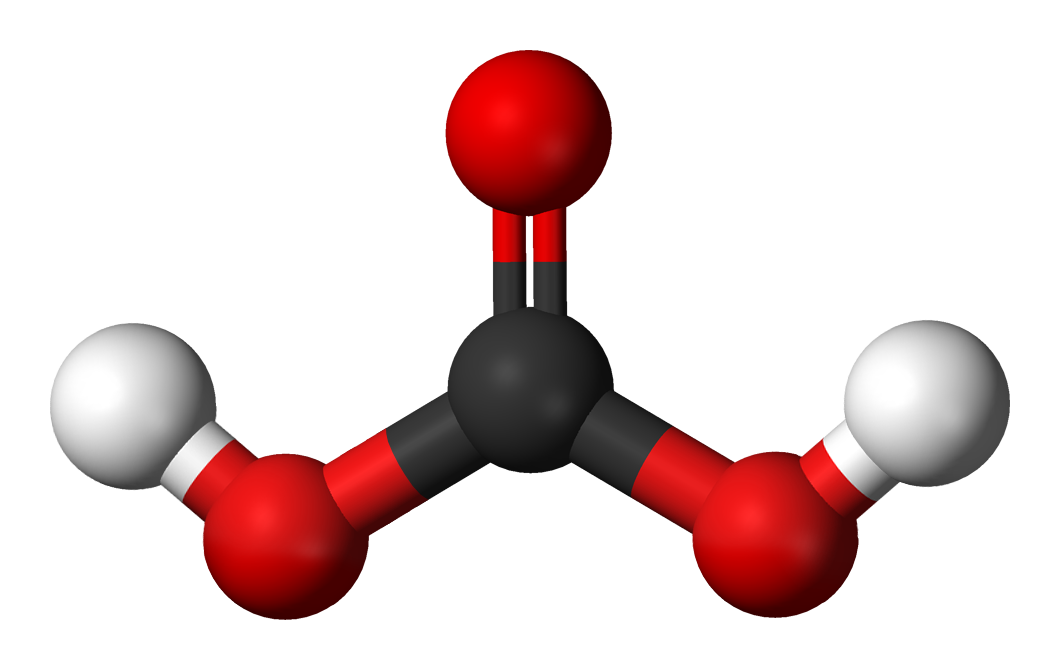Respiratory Alkalosis on:
[Wikipedia]
[Google]
[Amazon]
Respiratory alkalosis is a medical condition in which increased respiration elevates the blood pH beyond the normal range (7.35–7.45) with a concurrent reduction in arterial levels of
 The mechanism of respiratory alkalosis generally occurs when some stimulus makes a person hyperventilate. The increased breathing produces increased alveolar respiration, expelling CO2 from the circulation. This alters the dynamic
The mechanism of respiratory alkalosis generally occurs when some stimulus makes a person hyperventilate. The increased breathing produces increased alveolar respiration, expelling CO2 from the circulation. This alters the dynamic
carbon dioxide
Carbon dioxide is a chemical compound with the chemical formula . It is made up of molecules that each have one carbon atom covalent bond, covalently double bonded to two oxygen atoms. It is found in a gas state at room temperature and at norma ...
. This condition is one of the four primary disturbances of acid–base homeostasis
Acid–base homeostasis is the homeostasis, homeostatic regulation of the pH of the Body fluid, body's extracellular fluid (ECF). The proper #Acid–base balance, balance between the acids and Base (chemistry), bases (i.e. the pH) in the ECF is cr ...
.
Respiratory compensation is also a condition where increased respiration reduces carbon dioxide sometimes to level below the normal range. In this case it is a physiological response to low pH from metabolic processes and not the primary disorder.
Signs and symptoms
Signs and symptoms of respiratory alkalosis are as follows: * Palpitation * Tetany *Convulsion
A convulsion is a medical condition where the body muscles contract and relax rapidly and repeatedly, resulting in uncontrolled shaking. Because epileptic seizures typically include convulsions, the term ''convulsion'' is often used as a synony ...
* Sweating
Perspiration, also known as sweat, is the fluid secreted by sweat glands in the skin of mammals.
Two types of sweat glands can be found in humans: eccrine glands and apocrine glands. The eccrine sweat glands are distributed over much of the ...
Causes
Respiratory alkalosis may be produced as a result of the following causes:Mechanism
 The mechanism of respiratory alkalosis generally occurs when some stimulus makes a person hyperventilate. The increased breathing produces increased alveolar respiration, expelling CO2 from the circulation. This alters the dynamic
The mechanism of respiratory alkalosis generally occurs when some stimulus makes a person hyperventilate. The increased breathing produces increased alveolar respiration, expelling CO2 from the circulation. This alters the dynamic chemical equilibrium
In a chemical reaction, chemical equilibrium is the state in which both the Reagent, reactants and Product (chemistry), products are present in concentrations which have no further tendency to change with time, so that there is no observable chan ...
of carbon dioxide in the circulatory system. Circulating hydrogen ions and bicarbonate are shifted through the carbonic acid
Carbonic acid is a chemical compound with the chemical formula . The molecule rapidly converts to water and carbon dioxide in the presence of water. However, in the absence of water, it is quite stable at room temperature. The interconversion ...
(H2CO3) intermediate to make more CO2 via the enzyme carbonic anhydrase according to the following reaction:
This causes decreased circulating hydrogen ion concentration, and increased pH (alkalosis).
Diagnosis
The diagnosis of respiratory alkalosis is done via a test that measures the oxygen and carbon dioxide levels (in the blood), a chest x-ray, and a pulmonary function test of the individual. TheDavenport diagram
In acid base physiology, the Davenport diagram is a graphical tool, developed by Horace W. Davenport, that allows a clinician or investigator to describe blood bicarbonate concentrations and blood pH following a respiratory and/or metabolic acid-ba ...
is named after Horace W Davenport a teacher and physiologist which allows theoreticians and teachers to graphically describe acid base chemistry. It is not used by clinicians who prefer a practical rather than a theoretical approach
Classification
There are two types of respiratory alkalosis: chronic and acute as a result of the 3–5 day delay in kidney compensation of the abnormality. * ''Acute respiratory alkalosis'' occurs rapidly, and has a high pH because the response of the kidneys is slow. * ''Chronic respiratory alkalosis'' is a more long-standing condition, here one finds the kidneys have time to decrease the bicarbonate level.pH
* Acidemia is serum pH < 7.35. * Alkalemia is serum pH > 7.45. An acidosis is a physiologic process that increases hydrogen ion concentration. An alkalosis is a physiologic process that decreases hydrogen ion concentration.Treatment
Respiratory alkalosis is very rarely life-threatening, though pH level should not be 7.5 or greater. The aim in treatment is to detect the underlying cause. When PaCO2 is adjusted rapidly in individuals with chronic respiratory alkalosis,metabolic acidosis
Metabolic acidosis is a serious electrolyte disorder characterized by an imbalance in the body's acid-base balance. Metabolic acidosis has three main root causes: increased acid production, loss of bicarbonate, and a reduced ability of the kidn ...
may occur. If the individual is on a mechanical ventilator
A ventilator is a type of breathing apparatus, a class of health technology, medical technology that provides mechanical ventilation by moving breathable air into and out of the lungs, to deliver breaths to a patient who is physically unable to ...
then preventing hyperventilation is done via monitoring ABG levels.
In popular culture
In ''The Andromeda Strain
''The Andromeda Strain'' is a 1969 novel by American writer Michael Crichton, his first novel under his own name and his sixth novel overall. It documents the outbreak of a deadly extraterrestrial microorganism in Arizona and the team of scie ...
'', one of the characters is exposed to contamination, but saves himself by increasing his respiratory rate to induce alkalosis.
See also
References
Further reading
* * *External links
{{Acid-base disorders Acid–base disturbances